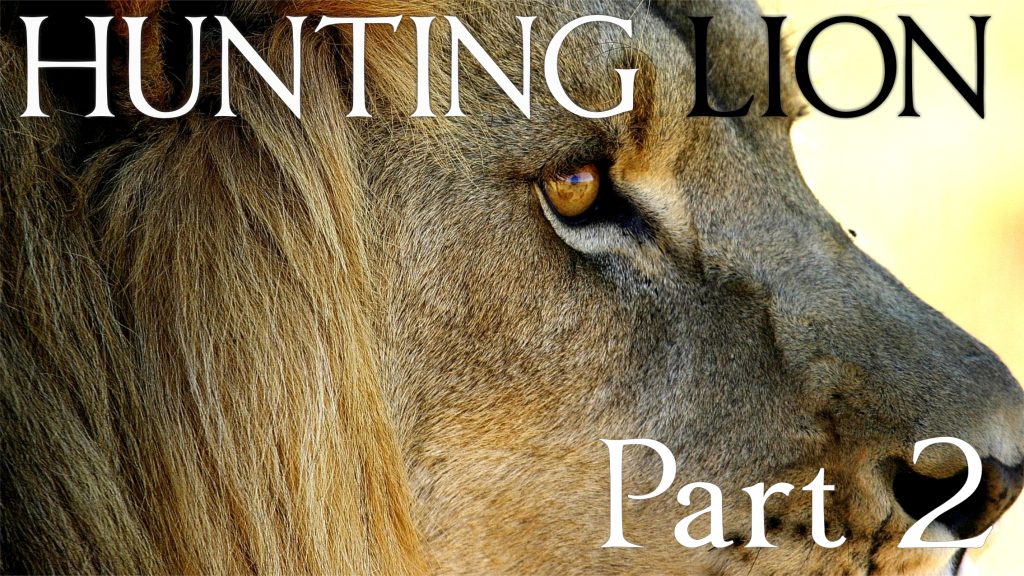In Part 1, we made our acquaintance with the African lion and got to learn something about its behaviour and habits and some of the signs that hunters can be on the lookout for when in pursuit of these potentially dangerous animals. The better you know and understand lions the more successful you will be in hunting them. Now we will turn our attention to recommended equipment, hunting methods, shot placement, and trophy issues.
It is a very useful exercise to practice shooting at a moving (charging) lion target as this will give you some idea of what it looks like in real life and help you to develop muscle memory for aiming quickly and accurately and will also give you an indication of how little time you have to deal with a lion charge
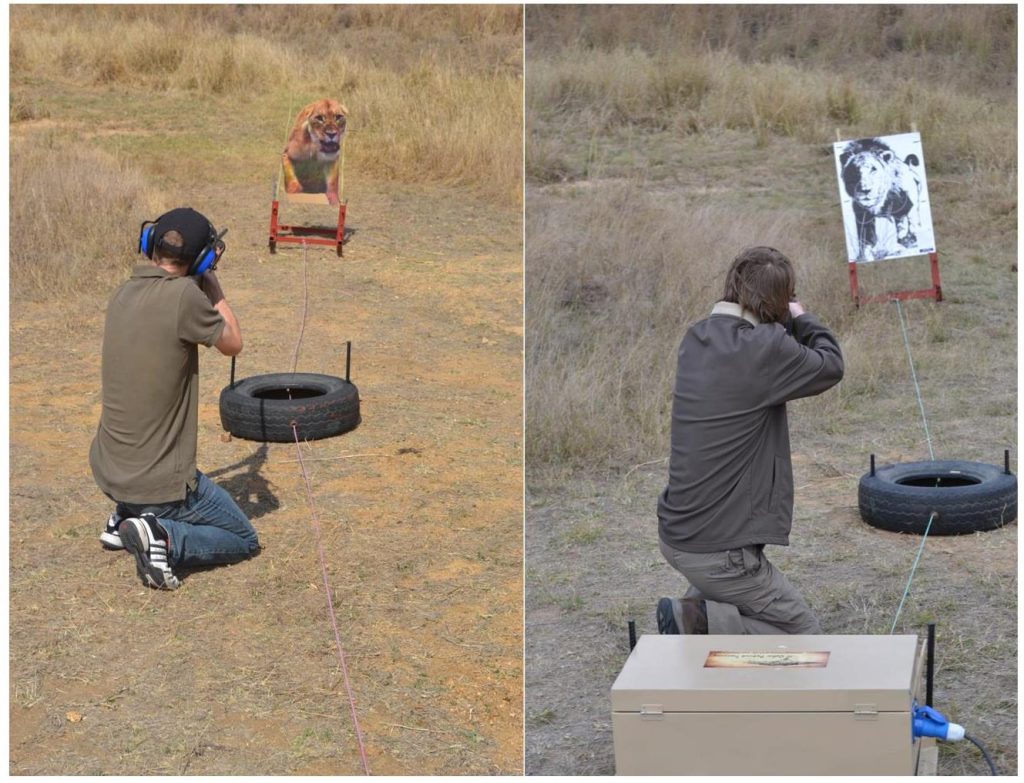
Hunting Methods
Hunting lions in an ethical way largely narrows down the method of choice to two options. Shooting over a bait or walk and stalk. Both these options are viable with a suitable firearm but because of the short range of a bow, walk, and stalk, if not impossible is extremely difficult and the bowhunter must therefore consider luring a lion to a bait and shooting from a hide.
Shooting over a bait
Sometimes, it is a contentious issue with some questioning its ethics, but using bait to lure a lion close enough for a bow or rifle shot is probably the most widely used and most successful technique for hunting this species. Given time restraints, hunting free-ranging lions on foot is a very difficult undertaking.
When using the baiting method it is essential to first establish whether there are lion active in the area you are hunting in and then look for a suitable bait tree. A blind must be constructed downwind of the bait tree no further than 35 meters distant for a bow shot and no further than 50m for a rifle shot.
Bait should preferably be of a species to which lions are partial – such as zebra, buffalo, or wildebeest, for example. Bait must be securely chained to the trunk or branch of a large tree or hung from a strong cable or chain.
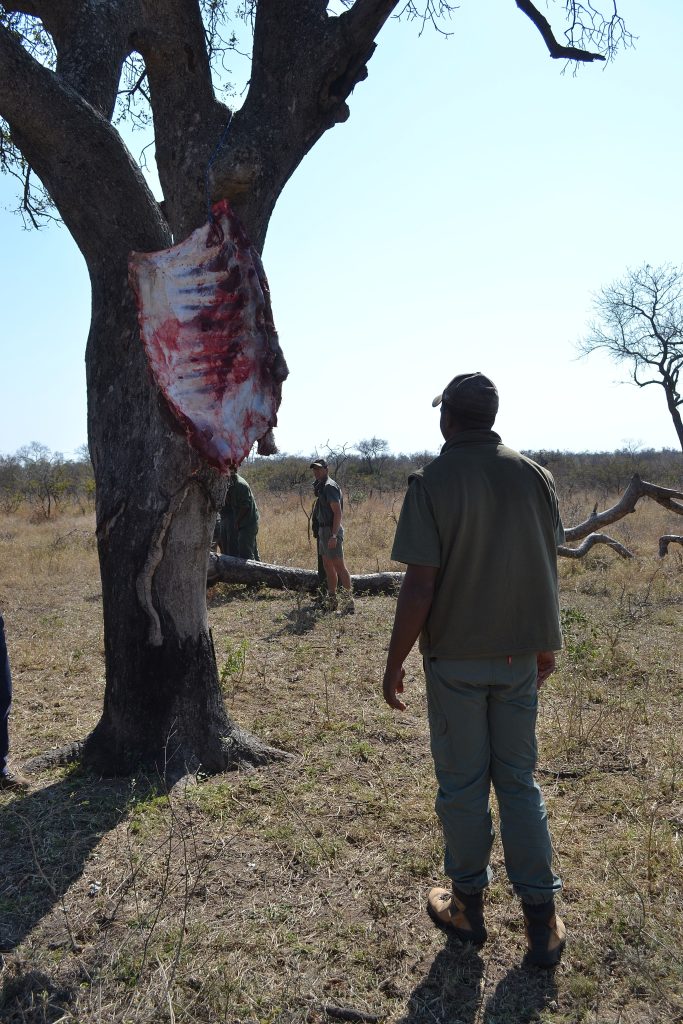
If not secured lion will soon carry off the bait and with it your opportunity for a shot. Bait should be hauled up high enough for lions to reach on their hind legs but also high enough to be inaccessible to hyenas. Although lions can climb some trees they are not as good climbers as leopards so rather let the bait hang as opposed to fixing it to a lateral branch.
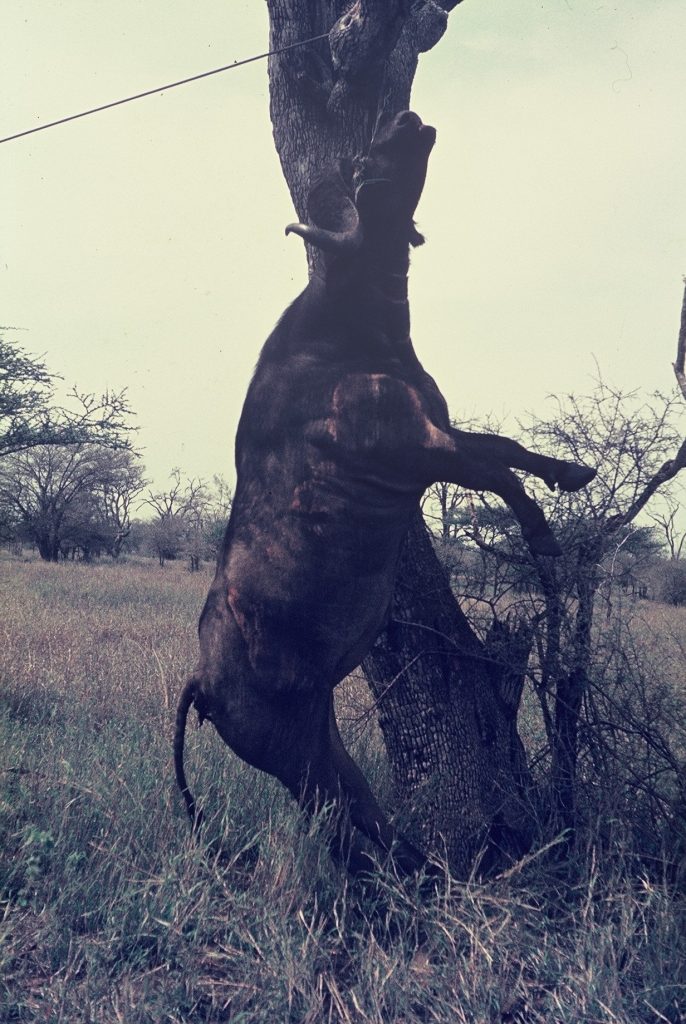
When lions mill around a hanging bait they will present good side-on-shot options if you are patient.
The blind whilst affording concealment to the hunter/s should also offer a clear shot as any contact by the arrow with twigs, leaves or branches will deflect the shot resulting in a complete miss or a wounded animal. Make sure to clear away branches, twigs, and leaves when preparing the bait tree.
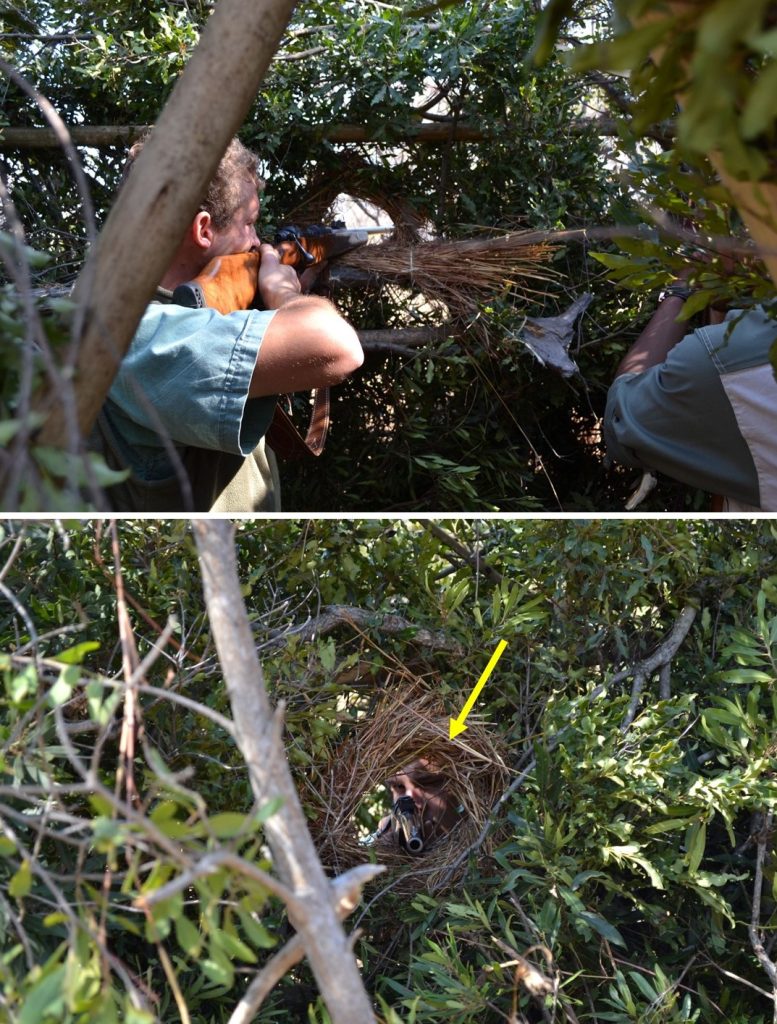
The three advantages of shooting over bait are that (1) If the setup is correct the lion is generally unaware of the hunters hidden in the hide (2) (Figure 5)
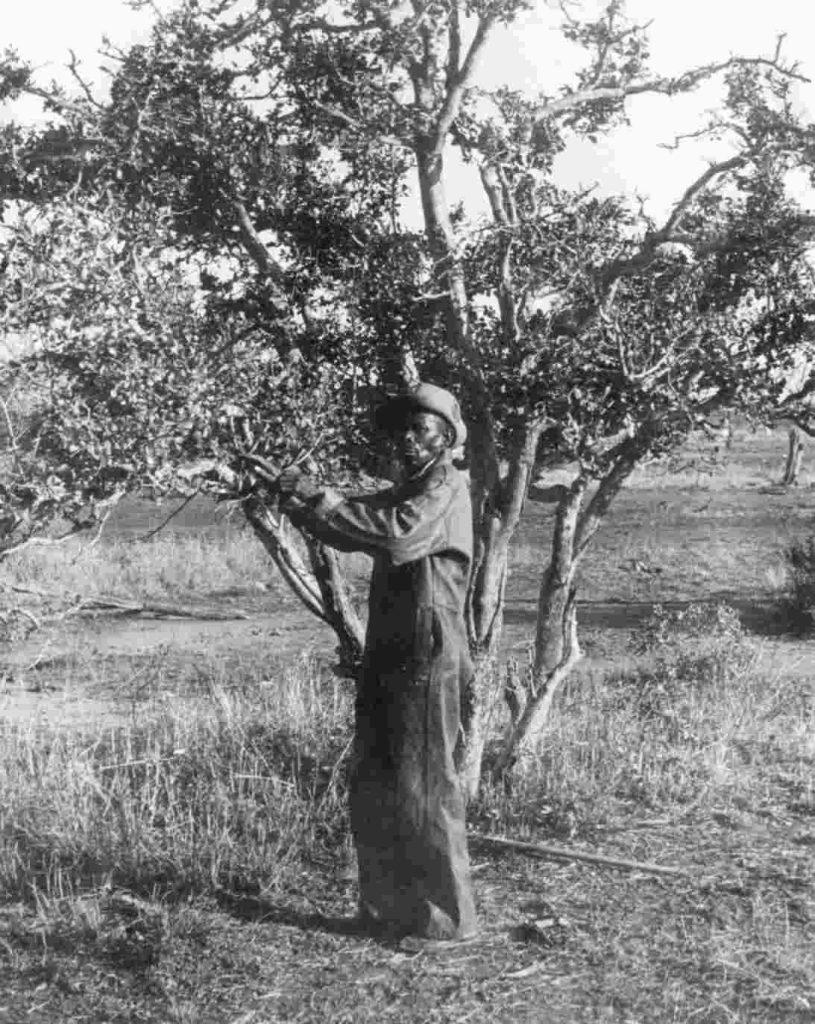
Generally speaking, the hunter has more time to take careful and deliberate aim (3) At some point the lion/s will offer a clear shot at the vitals so the hunter can afford to wait for this opportunity to present itself.
Walk and stalk
Sometimes canny lions have had some previous experience with baits and now shy away from them. To hunt these lions the hunter will have to resort to tracking them on foot. This is the” real thing” and without doubt the most exciting way to hunt a lion because it often ends up in close encounters when the deep growls and fiery eyes of an angry lion will have adrenaline pumping out of the hunters’ ears.
Hunting lions using the walk-and-stalk method is very time-consuming requiring hours of walking, tracking, careful and constant observation, and good stalking ability. Lions have the innate ability to flatten themselves in the grass or make themselves almost invisible in the bush and it is essential that the hunter keep a sharp lookout for them.
Walk and stalk should commence at first light when the lion may still be on the move. The stalk should begin preferably from where the fresh sign is located – tracks, scat, or the remains of a fresh kill.
Tracking a lion on foot can be relatively easy or extremely difficult, depending on the ground covered by the animal. Certain substrates and vegetation are optimal for tracking lions, whereas others make it very hard work indeed. Usually, lions will traverse a mixture of easy-track and hard-track areas. They may amble down a sandy bush track for a while and then veer off across a grassy plain where you will have to rely more on aerial signs than tracks on the ground and to make things difficult, may cross rocky areas where you will really have your work cut out.
Tracking these animals can be a very frustrating exercise especially if it becomes aware of being stalked which will usually result in it trotting off.
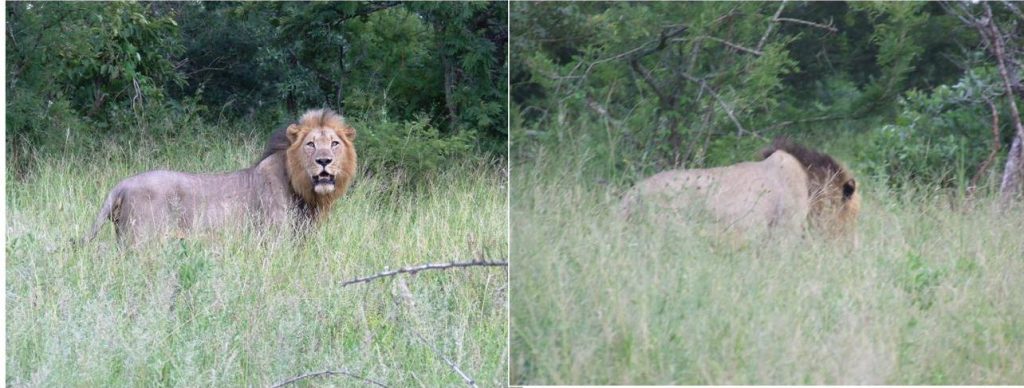
During the day most lions will choose to put distance between themselves and followers. Occasionally the odd bold individual may stand its ground or even show aggression by approaching closer in a threatening manner.
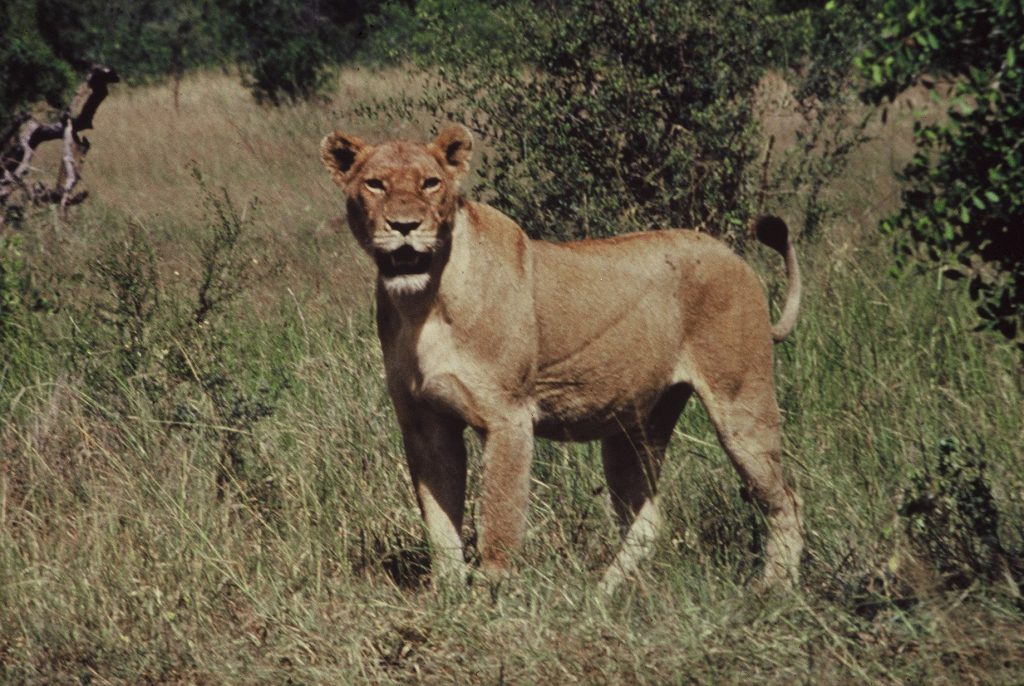
This may present a hunter with an opportunity for a shot. It will be more the exception than the rule for an unwounded lion to charge unprovoked.
Fortunately, during the day, especially when things start warming up, lions do not travel far and will soon find some shady spot to lie up and sleep the day away.
If you stay on track from early morning you will in all likelihood catch up to the lion/s before mid-morning. The trick is to see them first and to walk with the wind in your face. Things can get interesting if you blunder into them unexpectedly. In most cases, they will set off in the opposite direction with a growl (perhaps) and at a quick trot. Different from when they are wounded.
Experienced trackers will be required as lions are one of the more difficult species to track through the bush. Their soft paws sometimes leave good tracks on sandy or wet bush roads but can be difficult to spot and follow on hard compacted ground or across stretches of short grass. They may be easier to track in long grass where they may leave an aerial swathe which can sometimes be fairly visible.
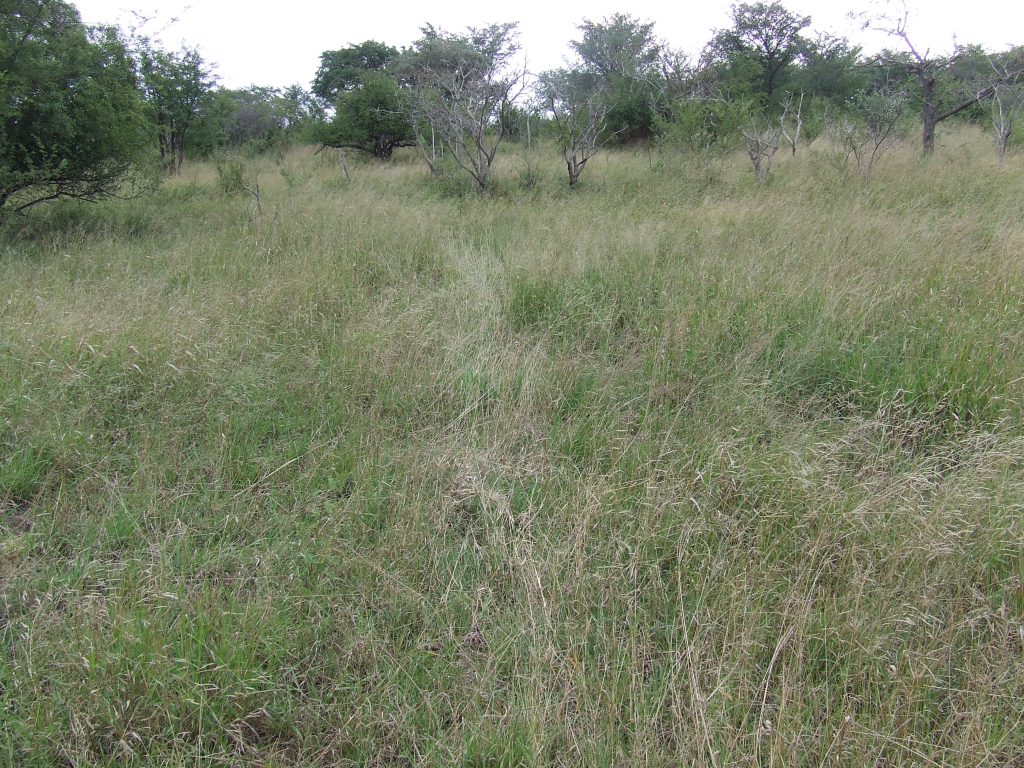
Tracking may be a slow and arduous exercise requiring abundant patience and constant vigilance.
As the day warms up lions become progressively lazier and by midmorning will look for a shady spot where they will lie up until the day starts to cool in the late afternoon.
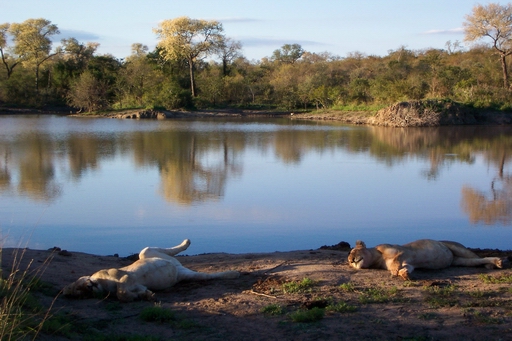
It is during these rest periods that the best opportunity to get close enough for a shot may present itself as lions often sleep very soundly. A quiet, downwind approach may get the bowhunter to within final stalking distance. Sometimes on a cold, chilly morning lions will look for sunny patches to lie in.
If a carcass is found of a large animal that still has a lot of meat on it the bowhunter may be in luck as lions may
(a) either be sleeping off their meal in the nearby vicinity or
(b) will return for a “second sitting” to the carcass.
Both may present an opportunity for a shot. If you discover a carcass that has enough food left on it which may induce the lion to come back to feed on it, it may be a good idea to cover it with branches. If vultures spot it they will descend in their hordes and little will remain of the kill to induce lions to return for a second feed.
Recommended Calibres and Bowhunting Equipment
Rifles
Calibres that can be used with confidence on lion include the following (Figure 10):
- .308 Winchester
- 30-06 Springfield
- .338 Winchester Magnum
- 9.3x62mm
- .375 Holland & Holland Magnum
Whilst heavier calibres such as .404 Jeffery, .416 Rigby, .458 Winchester Magnum, and .458 Lott can, of course, be used on lions it is not necessary as a lion can be taken successfully with smaller calibres.
Bullets
Recommended bullets for hunting lions are soft points or expanding solids.
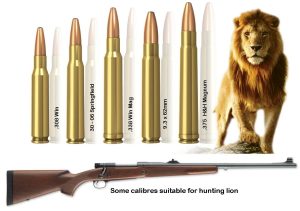
Solids are not recommended as lion bone structure is not very robust and you are likely to get a pass-through when using a solid. Depending on the calibre being used, suitable bullet weights may range from 180 to 300 grains.
Bows
Lions are not particularly heavy-boned and can be taken with bows as light as 60-pound draw weight. A heavier draw weight of 70-pounds or more is however recommended. Arrows of a minimum of 500-600 grains should be utilized. There are a variety of strong well-constructed 2 and 3-blade broadheads which can be used on lions.
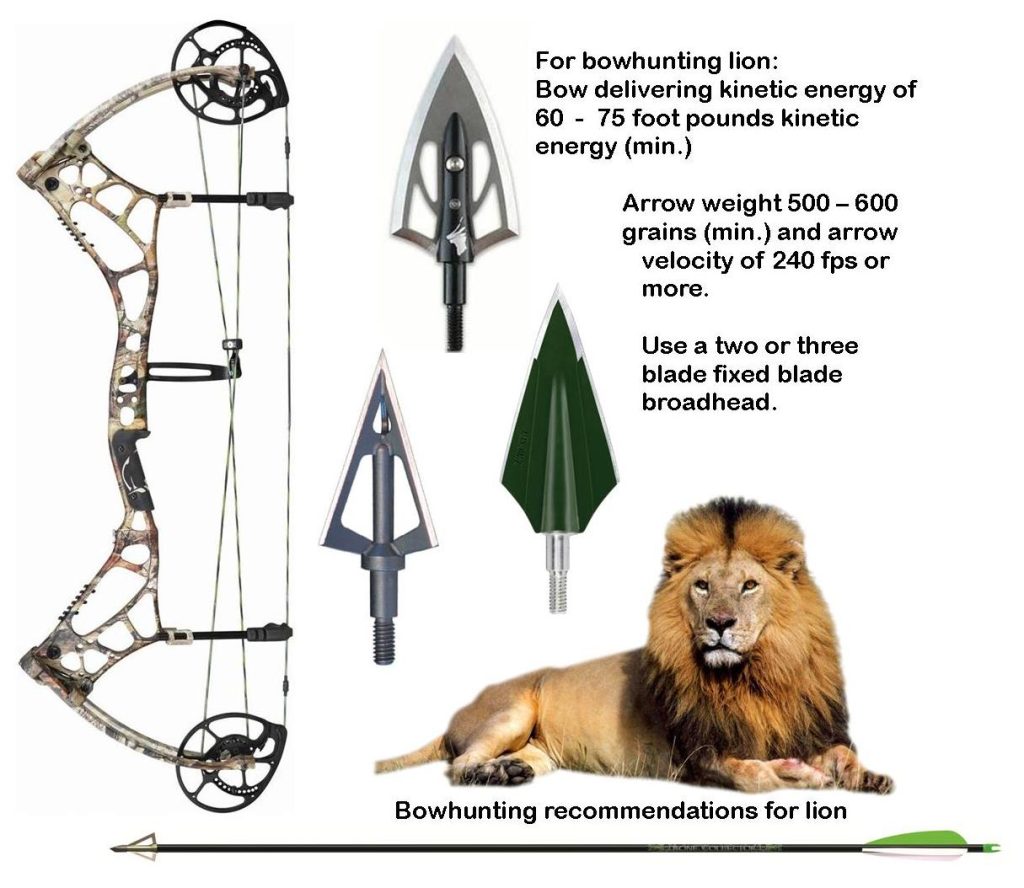
Open-on-impact (mechanical) broadheads are not recommended.
Shot Placement
Rifle
With a rifle of suitable calibre and a well-constructed bullet, the rifle hunter has a number of options including brain, neck, or heart/lung shots from a side on, quartering towards, or quartering away presentation, and brain or heart shots from a frontal presentation.
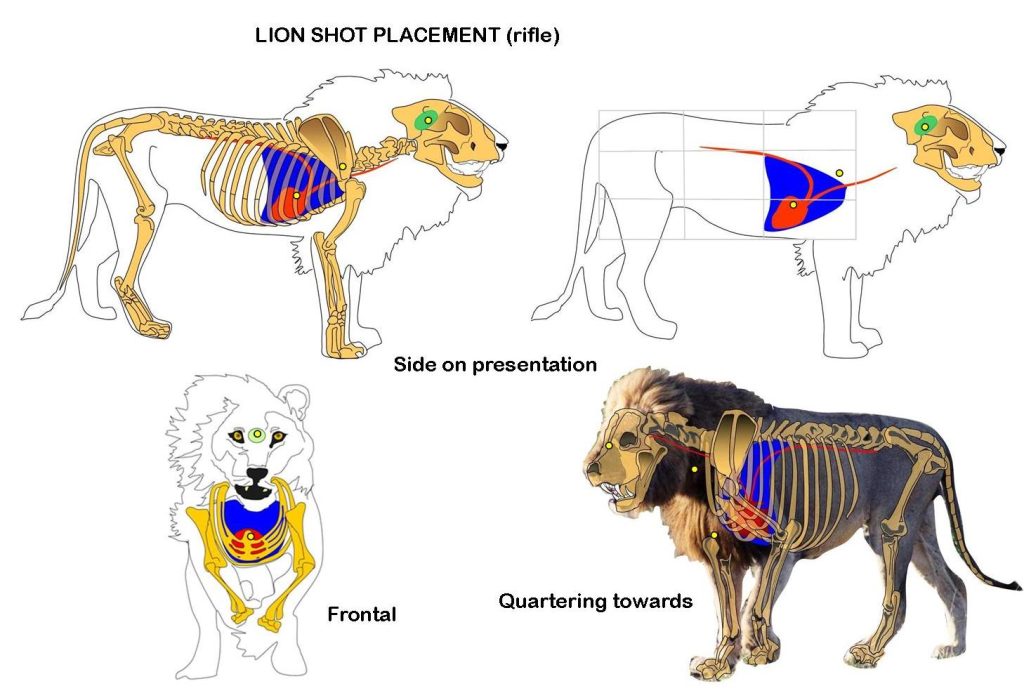
If the hunter wants the skull undamaged for trophy purposes, the heart/lung shot will usually be the one of choice. However, during a dangerous charge, a brain shot will have to be taken to drop the animal. Neck shots, although quite possible, are generally risky and are not recommended.
Bow
The two shot options with bow and arrow are a side-on heart/lung shot (Figure 14) or a quartering-away heart/lung shot.
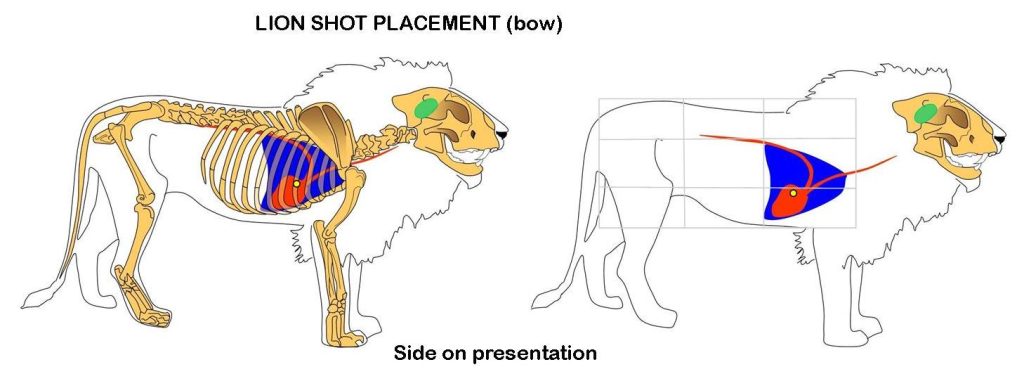
Some lions have been taken using frontal chest shots but this is ill-advised.
Follow Up
In Part 3, we will go into some detail as we consider the implications of following up on a wounded lion.
Trophy Measurements and Recording Criteria
Lion trophies are ranked according to the sum of the length and width of the skulls. See Figure 15.
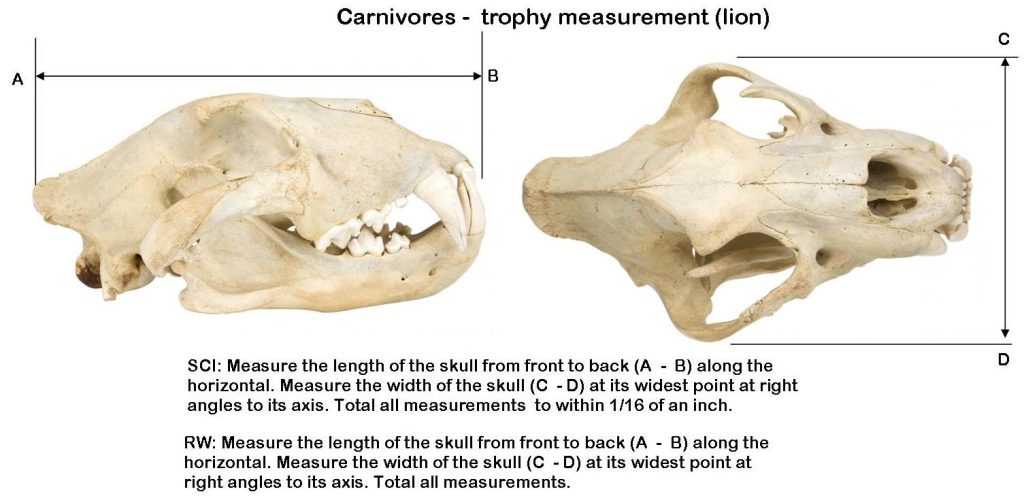
Rowland Ward method: Minimum score for record inclusion is 23 inches (rifle) and 22.5 inches (archery)
SCI method: The minimum score for record inclusion is 24 inches. The record is 28 ¾ inches.
Skinning
If the hunter intends to have a full mount, shoulder mount, or floor rug made from his trophy it is essential that the lion be skinned and the skin be salted as soon as possible as “hair slip” is likely to occur should skinning be delayed.
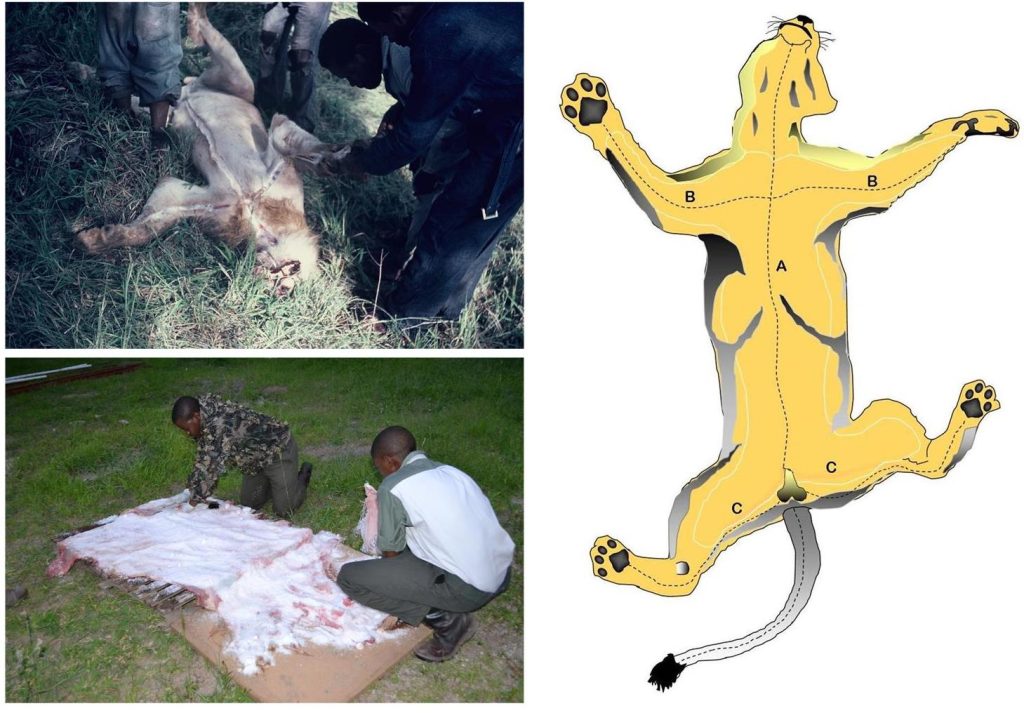
References
- Cheney, C.S. (2013) The Comprehensive Guide to Tracking – Safari Press
- Mellon, L. (1975) African Hunter –Harcourt Brace Jovanovich New York and London
- Robertson, K. (1999) The Perfect Shot – Safari Press
- Robertson, K (2007) Africa’s Most Dangerous – Safari press

